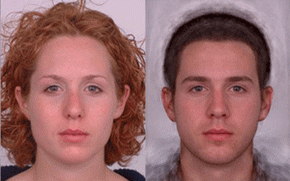Trustworthy not lustworthy

Students who were shown pictures of people who looked like themselves found the images trustworthy, but they were not sexually attracted to the "lookalikes".
Psychologists showed students pairs of face photos, one that was subtly altered to resemble the student looking at the images and one that resembled another person.
The similiarities were not spotted by the undergraduates who were asked to decide between pairs of faces as to which was the most trustworthy. The majority of participants selected the "lookalike" face from each pair.
But when asked to decide which they found the most attractive for a relationship, the students preferred the face they didn’t resemble.
Dr Lisa DeBruine, Honorary Visiting Researcher at the University of Aberdeen, said: “The participants in our study weren’t aware of the resemblance but they judged the faces which looked like them as more trustworthy.
“Basically this supports the idea that people – perhaps unwittingly - detect facial resemblance. It means to them, on some level, that this person is “family” and they are more trusting of them.
“However the similar faces were also deemed sexually unattractive by the students. These results back the notion that people trust kin but avoid them in a sexual setting due to the costs of inbreeding.”
Dr DeBruine carried out the research at McMaster University in Canada and is now continuing her work within the Schools of Psychology at the University of Aberdeen and the University of St Andrews.
A total of 66 male and 78 female undergraduates took part in the research, which involved participants judging a series of paired faces. One of the faces in each pair had been electronically manipulated so it very subtly contained some of the features of the face of the student viewing the images. (Students had had their photographs taken sometime earlier for a previous experiment.)
As well as trustworthiness, students were asked to select faces they preferred for a short-term relationship and a long-term relationship. For this study, examples of short-term relationships included a single-date or one-night stand. Long-term included someone you might want to move in with or marry.
The short-term relationship question generated the biggest response against the lookalike face.
Once the experiment had ended, students were told that some characteristics of their own faces had appeared in some of the computer generated images that they had viewed. None had realised that this was the case.
Source: University of Aberdeen

















